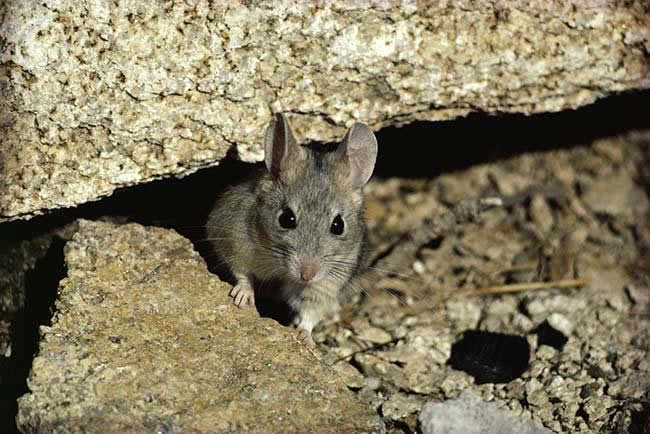Reproduction
The Neotoma Fuscipes which lives in the mountains of
California has a reproductive
lifestyle very different than ours. The differences lie within
the mating patterns, their breeding seasons, and habits once the
female becomes pregnant. This wood rat which is most commonly
believed to be monogamous are in fact not exclusively monogamous
but are also promiscuous when beneficial to their fitness.
The mating patterns of the wood rat are different than ours
in the fact that they are more commonly promiscuous. Promiscuity
is defined as members of both sex nonexclusively with many
partners during the breeding season without creating bonds (M.B.
McEachern, et. al. 2009). Both males and females are promiscuous
 females
only mate with the males within a certain range from their homes
(M.B. McEachern, et. al., 2009). M.B. McEachern and his colleges
also found that even though most of the species are promiscuous
about half the females are monogamous, this was more common in
area of juniper woodland. The males were monogamous about
forty-three percent of the time, monogamy was more common in
area of coniferous forest (M.B. McEachern, et. al. 2009). To
learn more about the interactions between the males and females
visit follow this link. These
patterns can only happen during certain breeding seasons.
females
only mate with the males within a certain range from their homes
(M.B. McEachern, et. al., 2009). M.B. McEachern and his colleges
also found that even though most of the species are promiscuous
about half the females are monogamous, this was more common in
area of juniper woodland. The males were monogamous about
forty-three percent of the time, monogamy was more common in
area of coniferous forest (M.B. McEachern, et. al. 2009). To
learn more about the interactions between the males and females
visit follow this link. These
patterns can only happen during certain breeding seasons.
The breeding season is a very important aspect of the wood
rats life, without it they would not survive. The season last
from mid-September till mid-July, this breeding season coincides
with the rainy season due to for availability increasing
reproductive fitness (Wallen 1982). As a result of the breeding season and the size of a
wood rat community not all of the males will reach full sexual
maturity or even physical size (Neotoma fuscipes: dusky footed
wood rat). As a result of the stunting of some males sexual
maturity there are two forms of male testes, this includes
scrotal testes which are meant for mating and abdominal testes
which are not meant for mating (Wallen 1982).To learn more about
the wood rats average size visit the
form and function page. Once mating has occurred the
interactions between males and females change drastically.
This drastic change is a result to the females becoming
pregnant and their journey toward raising their young. Once a
female becomes pregnant she will become intolerant toward the
male, she will also be intolerant toward other males (Neotoma
fuscipes: dusky footed wood rat). According to the article
Neotoma fuscipes dusky footed wood rat the females are highly
intolerant that they can become violent with the males. Due to
the intolerance of the females males do not provide any parental
care (M.B. McEachern, et. al. 2009). The females can give birth
to anywhere from one to four young (Dusky
Footed Wood Rat). The
young will be weaned of their mother’s milk and begin eating
vegetation at about three weeks (Neotoma fuscipes: dusky footed
wood rat).
Home
Interactions
Gabriella Tuminello and Emma Conway of the University of
Wisconsin - La Crosse. Bio 203 - Spring 2014